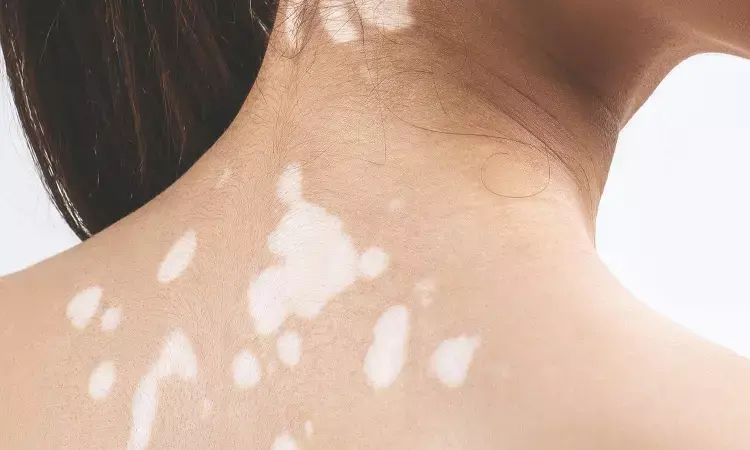- Home
- Medical news & Guidelines
- Anesthesiology
- Cardiology and CTVS
- Critical Care
- Dentistry
- Dermatology
- Diabetes and Endocrinology
- ENT
- Gastroenterology
- Medicine
- Nephrology
- Neurology
- Obstretics-Gynaecology
- Oncology
- Ophthalmology
- Orthopaedics
- Pediatrics-Neonatology
- Psychiatry
- Pulmonology
- Radiology
- Surgery
- Urology
- Laboratory Medicine
- Diet
- Nursing
- Paramedical
- Physiotherapy
- Health news
- Fact Check
- Bone Health Fact Check
- Brain Health Fact Check
- Cancer Related Fact Check
- Child Care Fact Check
- Dental and oral health fact check
- Diabetes and metabolic health fact check
- Diet and Nutrition Fact Check
- Eye and ENT Care Fact Check
- Fitness fact check
- Gut health fact check
- Heart health fact check
- Kidney health fact check
- Medical education fact check
- Men's health fact check
- Respiratory fact check
- Skin and hair care fact check
- Vaccine and Immunization fact check
- Women's health fact check
- AYUSH
- State News
- Andaman and Nicobar Islands
- Andhra Pradesh
- Arunachal Pradesh
- Assam
- Bihar
- Chandigarh
- Chattisgarh
- Dadra and Nagar Haveli
- Daman and Diu
- Delhi
- Goa
- Gujarat
- Haryana
- Himachal Pradesh
- Jammu & Kashmir
- Jharkhand
- Karnataka
- Kerala
- Ladakh
- Lakshadweep
- Madhya Pradesh
- Maharashtra
- Manipur
- Meghalaya
- Mizoram
- Nagaland
- Odisha
- Puducherry
- Punjab
- Rajasthan
- Sikkim
- Tamil Nadu
- Telangana
- Tripura
- Uttar Pradesh
- Uttrakhand
- West Bengal
- Medical Education
- Industry
Polymorphism in Vitamin D receptors linked to development of vitiligo

In a new study published in Journal of Cosmetic Dermatology, it was shown that ApaI and BsmI polymorphisms in vitamin D receptor (VDR) have been linked to vitiligo susceptibility in the Asian population.
The susceptibility to vitiligo may be significantly influenced by polymorphisms in the vitamin D receptor. Numerous research studies have examined the links between Vitamin D receptor (VDR) polymorphisms and the chance of developing vitiligo, although the results are still controversial. In order to ascertain if polymorphisms in the VDR are related to the susceptibility to vitiligo, Young Ho Lee and colleagues carried out this investigation.
Using the PubMed/Medline and Embase databases, VDR polymorphisms in vitiligo patients and controls were found. Through the use of meta-analyses of all individuals as well as Asian, Arab, European, and Latin American groups, the associations between the VDR ApaI, BsmI, TaqI, and TaqI polymorphisms and vitiligo were examined.
The key findings of this review were:
1. 13 studies totaling 2,034 patients and 2,771 controls were incorporated into this meta-analysis.
2. There was no association between vitiligo and the VDR ApaI A allele in any of the participants.
3. However, there was a connection between the VDR ApaI A allele and vitiligo in Asians but not in Europeans or Arabs.
4. Vitiligo has been linked to the VDR ApaI polymorphism in Asians using recessive, dominant, and homozygote contrast models.
5. In a meta-analysis of the VDR BsmI polymorphism, vitiligo and the B allele were significantly associated.
6. For TaqI and FokI polymorphisms, however, no association between vitiligo and VDR polymorphisms was found.
In conclusion, the findings of this study emphasize the need for additional investigation into the associations between VDR polymorphisms and vitiligo in various ethnic groups based on the underlying ethnic variances. Large-scale research on individuals of different races is necessary in order to completely comprehend the role of VDR gene variations in vitiligo development.
Reference:
Lee, Y. H., & Song, G. G. (2022). Association between vitamin D receptor polymorphisms and vitiligo susceptibility: An updated meta‐analysis. In Journal of Cosmetic Dermatology. Wiley. https://doi.org/10.1111/jocd.15474
Neuroscience Masters graduate
Jacinthlyn Sylvia, a Neuroscience Master's graduate from Chennai has worked extensively in deciphering the neurobiology of cognition and motor control in aging. She also has spread-out exposure to Neurosurgery from her Bachelor’s. She is currently involved in active Neuro-Oncology research. She is an upcoming neuroscientist with a fiery passion for writing. Her news cover at Medical Dialogues feature recent discoveries and updates from the healthcare and biomedical research fields. She can be reached at editorial@medicaldialogues.in
Dr Kamal Kant Kohli-MBBS, DTCD- a chest specialist with more than 30 years of practice and a flair for writing clinical articles, Dr Kamal Kant Kohli joined Medical Dialogues as a Chief Editor of Medical News. Besides writing articles, as an editor, he proofreads and verifies all the medical content published on Medical Dialogues including those coming from journals, studies,medical conferences,guidelines etc. Email: drkohli@medicaldialogues.in. Contact no. 011-43720751


